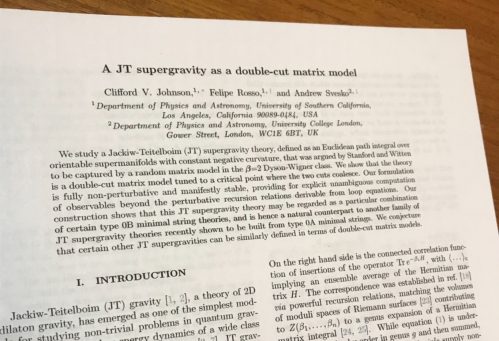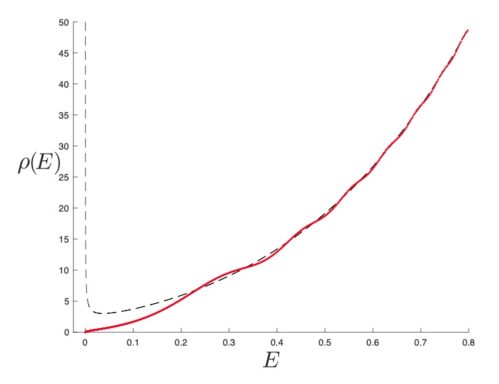That Feeling
Several weeks ago, while writing up a nice set of results that extended some work I did last year, I found that I was stuck finding the right wording for how I should nuance a (seemingly minor) matter in the introductory remarks. It was partly because, frankly, I’d got bored of the standard introduction I usually make to papers on this particular subject (matrix models and 2D gravity), because I’ve written quite a few in the last two years (10-Yikes!). But I’d found a new feature that warranted a more careful way of saying the usual things, and I wanted to incorporate that aspect, and also get the Reader interested in why this aspect was interesting and worth unpacking. I played around with better ways of saying it, and still was not entirely happy. I chipped away for a bit more over a few days, and kept coming up with something less than satisfactory. I’d carry on with things in the body of the paper that would be there whatever the introduction said. Then, after coming back to the introduction and trying again, I had to stop and explore the consequences of some of the rephrasing I was doing – to make sense of the new way I was trying to say what I wanted to say.
And then it happened…
You might know that feeling: A sort of pop goes off in your head and a tingle through the whole body, and then everything looks different all of a sudden, because you realize that you’ve found a completely new way of looking at things. A way that fits *so* well and incorporates so many of the facts that it just. feels. inevitable.
That’s what happened. And then I tried to see what it would say about the larger picture of physics this all fits in, looking for a way to make it fit, or to challenge the idea to see if it breaks. Not only did not not break, it just kept making sense, and (almost like the idea itself took charge of the process) immediately offered solutions to the problems I threw at it, and readily gobbled up existing challenges that the community has been facing for a while, and explained certain things that have been a puzzle for a long time.
For the next few days I actually could not write properly at the keyboard any more. My hands were trembling every time as I utterly rebuilt the entire paper and my world view, and I could barely sit still at times.
I know this sounds like a lot, and you should know that I am open to the possibility that it is somehow wrong, but it is too compelling not to share, so that’s what my paper that came out earlier this week is all about. I am not going to repeat the paper here, but will try to highlight some features of it that form a foundation for why this changes a lot about how we think about things in this corner of physics.
Random Stuff
Let me start in the simplest way possible, as I have done in the past, with a model that is well known to many different physics communities. The Gaussian random matrix model. Random matrix models have a very long history in trying to understand complicated systems (going back to Wishart (1928), and then Wigner (1955) – physicists seem to always forget to mention Wishart, and I’m sure I’m forgetting someone else too), and they show up in all kinds for systems. There are a lot of powerful results that have been developed, and you’ve read my writings about them here to do with how they get used for understanding aspects of string theory and quantum gravity in 2D, and also in higher dimensions. The “double scaling limit” is something I’ve talked about a lot here in particular. I won’t repeat all of it here, but invite you to go and look at other posts.
[…] Click to continue reading this post →
























